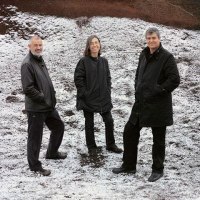The cellars of the basement are destined to exhibition halls, while the street level houses the architectural atelier and, the upper floor, with a characteristic covered under wooden tile, the spaces of the house. The cover, fragmented by skylights and light patios, creates an order of transverse bands that organize uses and communications. The last of these, which contains a shared program -the central exhibition hall and a large library-, the height of the slabs varies to increase its continuity with respect to the rest of the rooms.
"Marengo" a place of Poetry
Located in Bordeaux, in a protected area, in the old district of Saint-Michel, "Marengo" is a project that is part of a process of dialogue between the existing architecture of the 19th century and the result of our contemporary imagination.
Historically used as a food warehouse, this old building was built on wineries using all available land of 300m². That is, including the entire basement originally composed of 7 vaulted cellars, integrated natural refrigerated spaces for the storage of perishable products. In addition, the ground floor and the first floor were used for the rest of the products sold. The large open spaces offered by these two levels allowed to be very functional and, therefore, very active in time. The company "Louis Gelis-Didot" used this place for several years to import and export goods with the United States in particular.
At the end of the 19th century and the beginning of the 20th century, industrial and commercial expansion generated the need to communicate. It is true that the poster existed, the impression also, but to reach the greatest number, to last also, the inscription on the wall, the large and beautiful letter invaded the walls. Thus, like many other buildings in Bordeaux, "Marengo" endured the stigma of this area of "beautiful letters", which still gives its facade a great expressive quality. The history of the place is told in the stone ...
With the appropriate existing spaces, we imagine a total reconversion of the place. The project preserves and reinterprets the unique elements of the place. The peculiarities of the old building have been maintained or strengthened in many aspects.
Our intervention offered the place a real renaissance. We wanted the intrinsic specificities of the place to be rediscovered and valued within a renewed contemporary vision.
Public-private separation has defined the hierarchy of available spaces by affirming the horizontal stratification of the three existing levels: the basement for events, the ground floor for work, the floor for living. existing, we imagined a total reconversion of the place. Our wish was to invent a place with mixed uses that can serve as living space, work, events ... in an architectural unit.
The project preserves and reinterprets the singular elements of the place. The peculiarities of the old building have been maintained or strengthened in many aspects.
The work on the light and the fluidity of the spaces was our guide. We have fragmented these three spaces vertically to create an interpenetration of the exterior with the interior. With this action, the light has accompanied our action and reveals the internal fluidity of the place. This work on fragmentation has highlighted new spaces that reinforce the potential of the place.
The light passed through the entire building to circulate energy continuously, without breaking.

















































